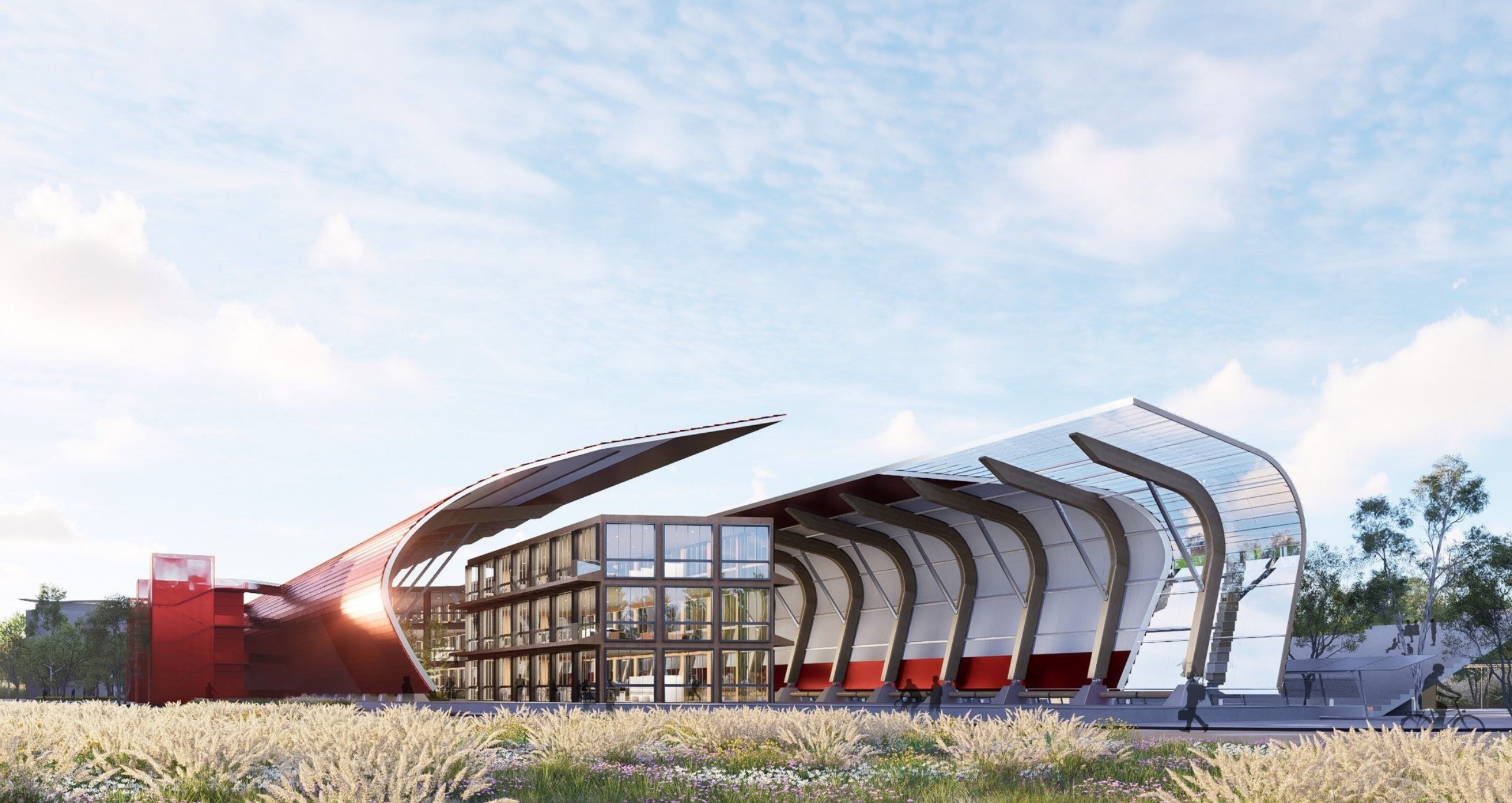
Institutional architecture, when executed with vision, transcends infrastructure to become legacy. The new College of Engineering exemplifies this ethos, emerging as a landmark of pedagogical and environmental foresight. Commissioned by a discerning client committed to architectural excellence, the project is a testament to how built form can shape generations.
At its core, the design articulates a philosophy of cyclic sustainability. This is not merely a building, but a system where planning, construction, and engineering coalesce into a living, breathing organism. The architecture is a pedagogical tool in itself, demonstrating principles of environmental stewardship and technological adaptability.
The dominant architectural gesture is a sweeping ‘supershed’, a curved roof that springs from the earth and arcs skyward, supported by glu-laminated timber members. Chosen for both symbolic and practical purposes, mass timber serves as a carbon-sequestering structure and as a warm, tactile counterpoint to the precision of engineering. The extruded form creates a continuous spatial envelope, unifying circulation, interaction, and contemplation beneath a single canopy.
Internally, the building is suffused with natural light which is filtered, reflected, and modulated to eliminate glare and minimise heat gain. The spatial geometry encourages interdisciplinary exchange, with convivial zones that blur the boundaries between formal instruction and informal dialogue.
The envelope is a high-performance skin of recycled aluminium and zinc, forming a thermocouple that activates a passive ventilation strategy. As the sun warms the outer shell, air is drawn through subterranean earth tunnels laid during foundation excavation, creating a stack effect that cools the interior with 100% fresh air.
Power generation is seamlessly integrated into the architecture through discrete titanium oxide solar panels positioned along the extreme edges of the curved roof. These panels, chosen for their efficiency and low visual impact, contribute to the building’s energy autonomy while maintaining the purity of its form.
In tandem with energy efficiency, the project incorporates a groundwater retention system through a network of well-articulated runoff channels. These channels guide rainwater into subterranean rivulets, replenishing the water table and supporting the site’s hydrological cycle. This invisible infrastructure is a quiet but powerful gesture of an ecological loop that mirrors the building’s pedagogical and environmental intent.